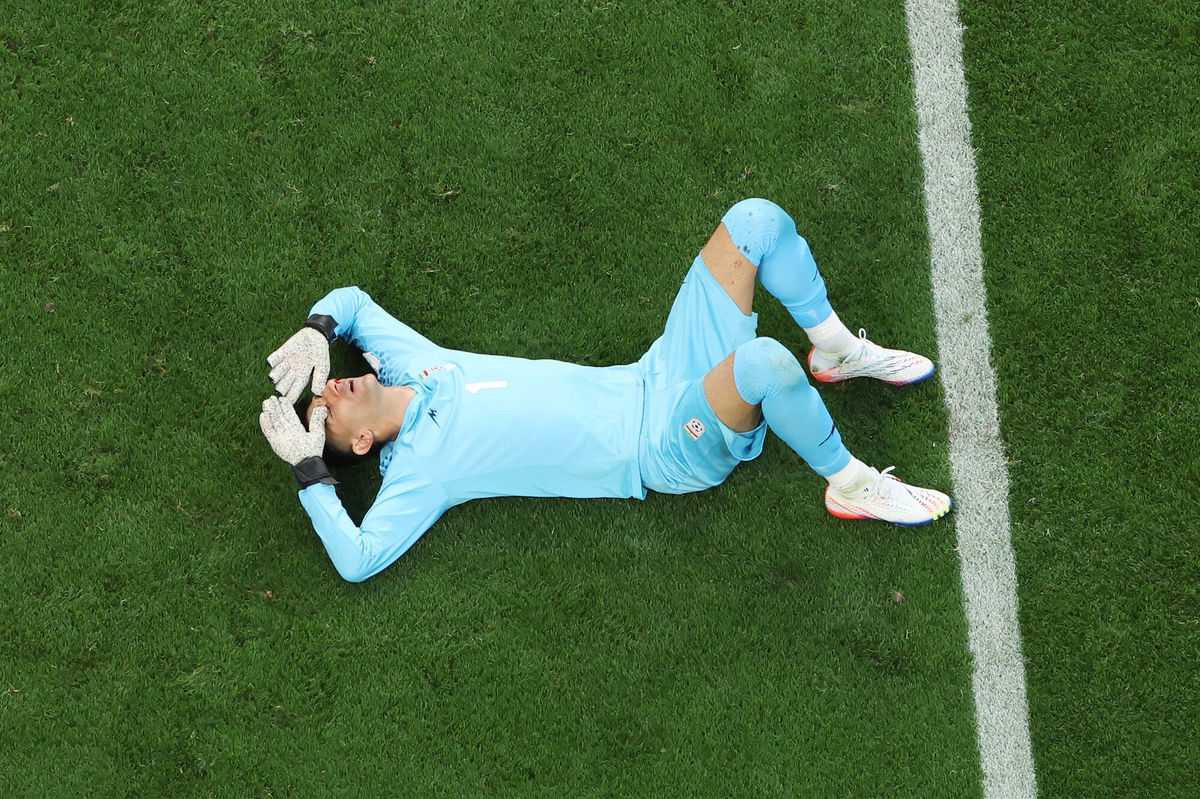Why there is so much stoppage time at the 2022 World Cup

Alireza Beiranvand lies injured during Iran's game against England.
By Ben Morse, CNN
In the past, there have been rumblings of football matches being shortened from their traditional 90-minute length to appeal to a younger generation, one used to digesting content quickly.
But, at the 2022 World Cup, audiences are experiencing games which have just got longer — a lot longer.
We’ve seen fourth officials raising their electronic boards at the end of halves throughout games in Qatar signaling well over the usual four or five minutes.
Seven or eight minutes often seems to be the minimum. On a few occasions already, over 10 minutes have been added on.
It has resulted in just one of the opening eight games of the tournament finishing in less that 100 minutes.
In fact, according to stats website Opta, the five single halves with the most stoppage time in a single World Cup match, since records began in 1966, were all on Monday and Tuesday at the 2022 World Cup.
England’s 6-2 win over Iran totaled 117 minutes and 16 seconds, with 14 minutes and eight seconds added at the end of the first half and 13 minutes and eight seconds added on at the end of the second.
As a result, Mehdi Taremi’s penalty with 102 minutes and 30 seconds on the clock was the latest scored by any side in a World Cup since 1966.
Fourteen minutes and 34 seconds were added onto the 1-1 draw between Wales’ and United States Men’s National Team, 12 minutes and 49 seconds were added on to the Netherlands’ 2-0 victory over Senegal and 10 minutes and 18 seconds were added to Ecuador’s 2-0 win over host Qatar in the opening match of the tournament.
Some of the added time has been down to lengthy injury breaks.
Iran goalkeeper Alireza Beiranvand suffered a serious concussion in the team’s match against England while Saudi Arabia defender Yasser al-Shahrani was injured by a knee from his own goalkeeper, Mohammed al-Owais, against Argentina.
However, the elongated games are part of a move by FIFA, the sport’s governing body, to fight against perceived time wasting and to reclaim time lost for goal celebrations, video assistant referee (VAR) reviews and substitutions.
Pierluigi Collina, famed former referee and the current chairman of FIFA’s referees committee, explained before the start of the tournament that fans should expect games exceeding 100 minutes, with added time over “seven or eight minutes.”
“This is nothing new,” Collina said at a media conference. “(At the last World Cup) in Russia, it became quite normal for the fourth official to show the board with seven, eight, nine minutes on it.
“We recommended our referees to be very accurate in calculating the time to be added at the end of each half to compensate to time lost due to a specific kind of incident.
“What we want to avoid is to have a match with 42, 43, 44, 45 minutes of active play. This is not acceptable.
“Whenever there will be an incident like an injury treatment, substitution slot, penalty kick, red card or celebration of a goal — I want to underline that because it is a moment of joy for one team, for the other maybe not — but it may last one or one and a half minutes.
“So imagine in a half there are two or three goals scored and it’s easy to lose five or six minutes and this team must be compensated at the end.”
However, these lengthier games have prompted a mixed response from former players and soccer pundits.
Former England and Liverpool midfielder Jamie Carragher said on Twitter: “Enjoying the amount of time that is being added on by the officials at the Qatar World Cup 2022. There is too much time wasting in football!”
But South American football expert Tim Vickery said it was “adding extra rounds at the end of a boxing match.”
“Not in favor of these giant stoppage times,” Vickery wrote on Twitter. “Grinding the players into the ground. 4 would have been fine. 9? Not for me.”
He added: “Players already cover much more ground than they used to. Make up for blatant time wasting, ok. But all this is too much.”
Physiotherapist Matt Konopinski also warned that the increase in the amount of added time, on top of “an acute demand in terms of games and games density,” could lead to more player injuries.
“This will have a contribution to fatigue, both mental and physical,” Konopinski, who is the co-founder of Rehab4Performance, told CNN Sport.
“We know that there’s an increased injury risk towards the ends of halves so if we’re increasing the length of time the players are being asked to play then it would follow that there could be an increase in injury risk.
“From the mental side, it’s physiologically tough for teams to close out a game if an additional 10 minutes becomes added to the end of the game.
“It is also more challenging for teams looking to integrate players that may be returning after injury. For example, a 20-minute cameo may become a 30-minute-plus cameo.”
Konopinski also highlighted the busy soccer calendar. He said that the 32 World Cup teams andtheir members of staff will have to work “harder” to improve players’ recovery in between games.
“This will include interventions such as nutritional strategies, hydration strategies, therapeutic and technological advances in terms of recovery management. Examples would include soft tissue, swimming pools and ice chambers.”
Injury concerns aside, brace yourself for a lot more World Cup minutes until the tournament concludes on December 18.
The-CNN-Wire
™ & © 2022 Cable News Network, Inc., a Warner Bros. Discovery Company. All rights reserved.